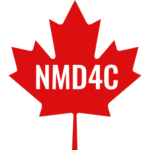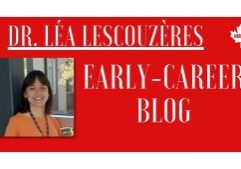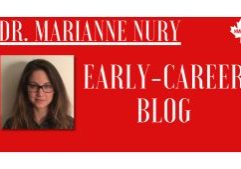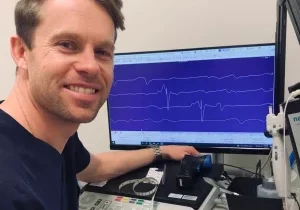Dr. Neena Lala-Tabbert Early Career Blog

Dr. Neena Lala-Tabbert's Blog
I think Sir David Attenborough best encapsulates my attraction to the natural sciences when he says that “An understanding of the natural world and what’s in it is a source of not only a great curiosity, but great fulfillment.” This curiosity with the natural sciences has led me to my current position as a postdoctoral fellow in the Korneluk Lab at the CHEO RI.
I started my scientific journey at the University of Toronto Mississauga studying Forensic Biology. I enjoyed my undergraduate studies, but I felt like something was missing. In my final year of undergrad, I was required to take a cellular and molecular biology course because it was the only biology course that fit into my schedule. This is when I discovered my passion. It was captivating to learn about the driving mechanisms of the natural world.
My passion for cellular and molecular biology led me to pursue a master’s degree in the Department of Anatomy and Cell Biology at Western University where I studied the molecular mechanisms regulating trophoblast differentiation during placental development. This project sparked my interest in regenerative medicine and so I came to the University of Ottawa to pursue a PhD in the lab of Dr. Nadine Wiper-Bergeron. During my PhD, I worked on understanding the regulation of muscle satellite cell function by the transcription factor C/EBPβ. I learned how understanding the regulation of satellite cell function under physiological conditions is a fundamental part of identifying therapeutic targets to treat skeletal muscle pathologies such as Duchenne muscular dystrophy (DMD).
My fascination with understanding the cellular and molecular mechanisms regulating skeletal muscle regeneration and disease led me to the lab of Dr. Robert Korneluk at the CHEO Research Institute in Ottawa to perform my postdoctoral studies. For the past six years, I have been examining the role of cellular inhibitor of apoptosis (cIAP) proteins in neuromuscular diseases (NMDs) such as denervation induced atrophy and DMD. Specifically, I am examining how we can target these proteins for the treatment of DMD.
I believe that having a great team and working together leads to success and makes it easier to keep going when things get tough. I have been very fortunate to have such great mentors and lab mates during my PhD and postdoctoral fellowship. I could not have done what I have without their guidance, support and encouragement.
In the future I hope to remain a member of the NMD community in Canada, become an independent researcher and continue my research examining the cellular and molecular mechanisms underlying NMDs to find novel therapeutic targets that can improve the quality of life for patients with NMDs.
About Dr. Neena Lala-Tabbert
Dr. Neena Lala-Tabbert completed her MSc at Western University where she explored how decorin can block VEGF-induced trophoblast differentiation during placental development. In 2016, she completed her PhD in the lab of Dr. Nadine Wiper Bergeron where she contributed to understanding mechanisms regulating muscle stem cell fate decisions by the transcription factor C/EBPβ.
Dr. Neena Lala-Tabbert is currently a postdoctoral fellow in the lab of Dr. Robert Korneluk at the CHEO Research Institute in Ottawa. She is investigating the utility of Smac Mimetic Compounds and TWEAK in reducing muscle pathology in mdx mice, the mouse model of Duchenne muscular dystrophy (DMD). She received a 2022 Muscular Dystrophy Association (MDA) Development Grant for this work.










